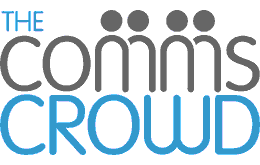The Importance of Building Trust in the World of Regtech
Time to read: 2 minutes
Lauren Bowden, Fintech content lead at The Comms Crowd looks at the opportunities and challenges facing Regtech firms, and the role trust plays in ensuring future success.
When the term Regtech burst onto the scene around circa 2015, it was met with mixed reaction. Some took the cynical path – simply as spin for existing regulatory technology vendors who have been in the business for years to benefit from Fintech’s halo effect. Others saw it as a way for new start-ups to shake things up, offering more cost-effective and agile SaaS-based solutions to post-GFC problems.
Seven years later, with the market projected to reach around USD 33.1 Billion by 2026, countless players are thriving in all areas from tax to cannabis. Established vendors are now embracing the portmanteau with open arms and investing in more flexible forward-looking business models – few would dispute that Regtech is here to stay.
That said – there are still a fair few hurdles these firms need to jump before they can realise their full potential. According to the FCA, one of the most active regulators supporting this burgeoning market, it all comes down to trust:
“The trust element is ingrained in the complex ‘business case for RegTech’ – RegTech firms need to convince firms to allow them to work with their most sensitive data assets and systems in order to solve their problems.”
Policies, procedures, and – most importantly – legal documentation go a long way to ensure sensitive data assets and systems remain safe. But before anything gets signed, to get even a toe in the door Regtech firms need to find ways to demonstrate trustworthiness. Of course, trust needs to be embedded internally first, through a solid culture, stemming from the top down and cultivated by HR, but it needs to be demonstrable externally too, especially in such a crowded market. And this can be achieved with transparent marketing communications.
- For start-ups when there’s a multitude of moving parts at any one time, external communications should be planned carefully and not rushed. Investing in building relationships with the trade journalists forms the beginning of your journey and is always time well spent, as these independent and credible sources are always essential conduits to getting news out when the time is right.
- For more established vendors looking to move into the Regtech space, a solid analyst relations programme should be at the heart of any product roadmap. Honest, open, and regular dialogue with the gatekeepers of those ever-important magic quadrants, waves, or rankings should be prioritised.
- Solid content marketing and a strategic social media plan including blogs, e-books, infographics, whitepapers, and other high value content shared directly with prospects and customers or distributed over curated social media accounts like LinkedIn can work at any size or type of Regtech firm. That is provided it speaks authentically to the right audience, and that content is relevant, it adds value, and is not overtly promotional. And with the amount of change inherent in the regulatory landscape, the opportunities for subject matter experts to demonstrate thought leadership and guidance are plentiful.
There is a whole arsenal of comms tools that Regtech firms can employ at various stages of their evolution, but the art is knowing when, what, how and to whom. Working with marketing communications professionals who understand the nuances of this complex, jargon-filled environment, as well as how to make the message hit home will ensure their voice is heard in this very crowded marketplace.
Social media is time consuming enough, do I need to invest in more than one channel?
Time to read: 3 minutes
A persistent and key question for B2B companies is whether there is real value in social media and, if so, which channels are worth the investment of time and resources. Our social media expert, Simona Cotta Ramusino shares her views on the best approach.
 The outage that simultaneously affected WhatsApp, Facebook and Instagram last month highlighted an important lesson for social media managers: either take a day off, or ensure you are on multiple platforms. But aside from the outage there is another reason why a B2B firm should be nurturing multiple social media channels – they fulfil different purposes.
The outage that simultaneously affected WhatsApp, Facebook and Instagram last month highlighted an important lesson for social media managers: either take a day off, or ensure you are on multiple platforms. But aside from the outage there is another reason why a B2B firm should be nurturing multiple social media channels – they fulfil different purposes.
The way I see it LinkedIn is about describing who you are, Twitter is about doing what you are and Facebook is about showing who you are.
Let’s hear it for LinkedIn
LinkedIn remains our preferred social media platform when it comes to our B2B clients.
According to some recent stats, LI drives 46% of social traffic to B2B sites and is considered the most credible source of content. Other numbers supporting the business case for having a LI presence include:
- 4 out of 5 people on the platform “drive business decisions”
- there are 61 million “senior-level influencers”
- 33% of B2B decision makers use LinkedIn to research purchases
As a fully integrated communications agency we see LinkedIn management as a key piece of the comms plan.
4 reasons we love LinkedIn
- You can build your company’s profile within your sector. As your competitors will likely be on LI too, it is important to be seen and promote your latest company news, updates and wins.
- You can promote thought leadership and highlight your company’s experts. This helps put the accent on the individuals driving the business as well as your products and services.
- You can directly engage with peers, clients and prospects. As with many social media platforms, LI supports two-way communication, allowing for followers to comment on and share your updates. You can also gather their views through polls and posts – something that more traditional channels do not allow for.
- You can have a positive impact on employees and attracting new hires. Understanding the kind of culture a company has is key when deciding whether it is going to be a right fit – whether it is worth leaving your current company for. It is no longer a leap of faith or a ‘grass is always green’ scenario: LI (and Facebook) can help you acquire a view of what it is or would be like working for a certain company.
LinkedIn has also added some interesting new features over the last year to improve user experience and make engagement with followers more interesting:
- LI Polls
- LI Live
- Option to use Carousels for posts.
Also, not quite as new (but still worth noting) is the option to set an event under your company profile, share it with connections, and invite connections to follow your company page.
For B2B firms, is there life beyond LinkedIn?
YES! Twitter is great if you are attending virtual (or dare we say live now) events and for sharing snippets from presentations or keynotes. It also allows you to follow and engage with key influencers in your space with many analysts and journalists tweeting regularly.
Facebook is probably the best platform to showcase your culture, the people that make the company a great place to be and any CSR projects that you may be engaged in. As well as helping to create a strong community feeling among employees it is also a powerful means of attracting new, like-minded people.
If you are a business that relies more on visual marketing then Instagram is the place to be. The platform is optimised for videos and images so products and services can be brought to a target audience in a more compelling, memorable, and engaging way, both building trust and increasing traffic back to your website. Although Instagram is often disregarded by B2B marketers, viewed mainly as mainly a B2C channel, there are stats and business reasons that support the value in having a presence on the platform:
“B2B companies experience their largest engagement ratios on Instagram—meaning that of the major social sites, Instagram fosters the highest number of interactions per number of followers. Not only does Instagram promote engagement through commenting, but it hosts text, photos, and videos directly on the platform so your followers don’t have to click elsewhere to see the content.”
So if you are considering upping your social media game or hiring someone to do it for you, establish what it is you want to achieve and who exactly you want to reach. Equipped with this knowledge, selecting the right platform or platforms, becomes much easier.
Follow us on LinkedIn and on Twitter.
Can anyone be a Social Media Manager?

Time to read: 2 minutes
Simona Cotta Ramusino shares her experience and the lessons learned over the last six years working as a social media manager for several of our FinTech clients.
So many presume because they can happily curate their own personal feeds that the same rules apply when managing a corporate feed. But I have found the skills do not cross over as readily as you might hope.
Social media cannot stand alone
Social media is the mirror of corporate communications. It may be because of my PR background but for me social media has to mirror what the PR machine does: help communicate a clear profile of the company, of what it does and of its people and values; use the same key messages to help present a consistent and constant image of the company; and promote key spokespeople as thought leaders in their industry. I am quite lucky that in my current position I often cover both roles of PR and social media consultant so I am able to reflect the tone and type of language in social media posts. I know what news a client would be interested in amplifying and of course what owned content is coming out that we can repurpose for social media. It is likely that big global firms may have these two roles fulfilled by more than one person. If that’s the case, make sure you are only a desk or a Skype/Zoom/Microsoft Teams message away from the PR manager so that you can work in synergy.
Scheduling is the perfect mix of science and art.
Most scheduling tools provide suggestions on the best times to schedule a post on LinkedIn or twitter. Most of the time these are good and useful suggestions. However, don’t let the robots take over – this is where human intervention can make a difference. Who is the audience for this piece of news? Where are they located? Which channels do they favour? Is it a big piece of insight that may be better to read at the end of the day? Or is it a video that should be watched in your lunch break? Is this a good blog post to read as you sit at your desk in the morning? Where / when is this [virtual] event taking place? That’s at least what I think when scheduling posts: choosing the right time zone to make sure you catch your audience at the right time and picking the right social channels on which to post to make sure you reach the right audience.
Talk the talk of your audience
Using the correct language is key. I mostly cover corporate social media accounts where the audience mainly comprises journalists, analysts, entrepreneurs and financial services senior figures so for me it is paramount the language used by clients on social channels is appropriate to reach this audience. Here are my two key rules when writing posts:
- Eats, shoots & leaves. Avoiding grammar mistakes and typos is key, particularly I would say on LinkedIn since this is where your peers and your clients’ peers are.
- Appropriateness of tone. This is a tip you will probably see repeated in every social media guidance document or blog post and it is the most obvious one but…. you will be surprised by how many blunders are made daily, how often a brand (or an individual) has had to backtrack because of a tweet thought of as a joke but instead very offensive – see @PureGym post comparing a hard workout to ’12 Years of Slave’.
- Apply a common sense filter e.g. when deciding whether a piece of company news is for internal consumption only or whether you should shout about it to all. Does the whole world need to see pictures of the company Christmas party? No. Are you issuing a release about an acquisition? If you are a listed company you may have some time restraints on when to do this so make sure you are aligned with your PR Communications Team.
Different platform, same rules
For me, managing corporate social media channels is like any other role in communications – you need to build your experience and knowledge, learn from your peers and ensure you always follow corporate communications best practices. Maybe not as much fun as you imagined, but very, very effective.
Social media: why employee advocacy is more important than ever

Time to read: 2 minutes
The past few months have forced us all to re-evaluate our lives at home, at work and beyond. We’re spending more time on video calls, sharing more on social media and taking greater advantage of online learning to expand our skills. So it’s no surprise that we’ve seen a big uptick in messages from clients wanting to boost their online presence, not least on social media. Requests vary, but most want to elevate their corporate accounts, especially the number of followers and engagement levels on Twitter and LinkedIn.
Our social media strategist Peter Springett shares his findings from recent audits he’s conducted.
Corporate accounts
- Profile page: most look professional, but solidly corporate. Profile photos and header images are often in line with the overall brand but show little of the ‘softer edge’ you need to stand out on social media.
- Followers: somewhere between 100 and 500 (it tends to be a little higher on LinkedIn).
- Posting frequency: about twice per day (maybe twice a week on LinkedIn).
- Tone of voice/personality: varies, but in many cases this is inconsistent or non-existent.
Personal accounts
During the audit we also look at the personal profiles of the leadership team. That’s when my jaw often hits the ground. A typical CEO has thousands of followers. Thousands! Even when their profile is incomplete. Some even lack a portrait photograph. Impressive? Yes, except that most organisations fail to take advantage of the opportunity. The skill is to turn these passive LinkedIn connections into active networks that promote the business, its offering and the people who make it possible.
With a little more time I usually find at least half-a-dozen employees (at all levels) who are active on social media in a professional capacity. They post and engage regularly, sometimes about their employer, more often about what fascinates them in their industry. Bringing these people into the mix is vital too. By the way, I’m not arguing against having stand-out corporate social media accounts. They matter enormously for the credibility of your business.
The trick is to combine both personal and corporate networks in a virtuous circle that boosts followers, engagement and inbound enquiries.
With one client we assembled and trained an employee advocacy team of 50 people, including the CEO, who were active on LinkedIn and Twitter. Some had thousands of followers, some had hundreds. But with the right training, they became enthusiastic participants, with some even reaching ‘influencer’ status in their industry. At the same time, the number of corporate account followers on Twitter grew from 800 to 7,000 and on LinkedIn from 12,000 to 75,000. The engagement uptick was equally positive. This growth was entirely organic, by the way. We didn’t pay a penny to advertise for followers or sponsor external influencers.
This doesn’t happen overnight.
You need to put a plan and a consistent resource in place to generate momentum on social media. Put it another way: there are no shortcuts, but there is a direct route to social engagement and leads, and we can show you where it lies.
If you’d like to find out more about how we can support your corporate and employee advocacy social media networks, get in touch with me: peter@commscrowd.com or connect with me on LinkedIn.
What Does a Great Blog look like?
Time to read: 3 minutes
So you’re a B2B Tech firm and your marketing team has agreed that a blog is the way forward (and indeed it is). This is the blog you need to read next. Sandra Vogel, who heads up tech content for The Crowd and ghost blogs for a range of firms, passes on her advice.
 So what does a great blog look like? The answer depends on what you want to get out of a blog, so for the sake of argument let’s say you run a business that sells goods or services. There’s a lot of competition for whatever it is you do, and you need to remind people you exist. You use a range of different methods to do this – a blog on your web site is part of the mix.
So what does a great blog look like? The answer depends on what you want to get out of a blog, so for the sake of argument let’s say you run a business that sells goods or services. There’s a lot of competition for whatever it is you do, and you need to remind people you exist. You use a range of different methods to do this – a blog on your web site is part of the mix.
To meet the requirements of your business, your blog needs to keep people coming back. It’s a tool for you to deliver useful information to existing and potential customers or clients. It’s a way of showing off your organisational personality. And it’s a way of helping people understand more about your products, new launches, upgrades, exciting ideas and plans you have for the business.
That’s a lot for a blog to do. Here are some guidelines for better blogging:
- Keep it short. In general try for no more than 600 to 700 words. People will get bored if they have to read more than that, and you might easily stray off the topic at hand.
- Keep it simple. Don’t try to cram all your wisdom into a single blog. Have a point to make, make it, expand a little, maybe give some examples. Develop your point of course, but be careful not to make things too complex.
- Do you need a call to action? I see some blogs that include a call to action every single time. As a reader I know how the blog will end – it’ll be ‘now go and look at our great product’. If that happens every time readers know a blog is a glorified advertisement. They’ll get bored, go away, and maybe never come back. Calls to action are important. But you probably don’t need one in every blog.
- Connect well with the rest of the site. Do you publish white papers, news releases, new product updates? Of course you do. Tie blogs in so that there is continuity, and so you can link to other resources where possible. Don’t leave the blog out on a limb.
- It’s a good idea to have a forward plan so that you don’t get to ‘blog day’ and sit staring at a blank screen wondering what to write. If you work with an agency – and that’s a really sensible idea – then they’ll help with this.
- Be regular. It’s a good idea to have a schedule. Perhaps you want to put a new post online every two weeks. If that’s what you want to do, stick to it. When you make your plan (above), make your schedule too. Both plan and schedule can change in the light of events, but if they’re not in place a blog is the kind of thing that an organisation can let slip if it is busy. A blog that’s not up to date is arguably worse than no blog at all.
- Look from the outside in. Visitors might not use your product or service, might not know your business at all, might just be passing by. Think about it from their point of view. This can be hard to do in-house. It’s another area where an agency can be really helpful.
There’s another guideline that’s overarching on all of the above. It’s about the writing quality. The tone, writing style, grammatical accuracy and readability of your blog speaks volumes – it’s probably more important than the content. Really. You might have the most fantastic point to make, but if the message is garbled, nobody is going to get to the bottom of the screen.
If a blog is going to work for you, you need to put energy, effort and expertise into it. Writing a blog is hard work, and it is a skill people learn and hone through years of experience. Ensuring that the blog plan and schedule are well managed and that topics are spot-on can also be tricky in a busy business. There is no shame in lacking the skills or the time that’s needed in-house. Bringing them in from outside can take your business blog to the next level.
Our Top 10 Tips for live tweeting
Time to read: 3 minutes
Sandra Vogel editor-in-residence issues her survival guide for live tweeting.

In context:
- 500 million tweets are sent every day
- 5,787 tweets are sent every second
- 326 million people use Twitter every month
There are some more mind-blowing stats here.
Now, of course we’re not all exposed to every tweet. But sometimes it is necessary to tweet on behalf of a client, and these are useful stats to bear in mind. Here are two more:
- The half-life of a tweet is apparently 24 minutes. If people haven’t read your tweet within half an hour, then the averages suggest they are not likely to get to it, because a tweet gets half of all its interactions within half an hour of being posted.
- Tweets with an image get 55% more engagement. So the image can matter even more than the words.
Nowhere is tweeting for a client quite so important and quite as stressful as when you are live tweeting an event. There will be a lot riding on what you do because live tweeted events can deliver great profile and original and interesting content. Events can be fast and furious, and it’s not easy to stay on top of everything. You only have one opportunity to get things right – or wrong.
Ten things you can do before you go live so you don’t die trying:
- Get the detailed insider version of the event programme, including whether there are to be any special announcements or launches that the public won’t be privy to till they happen because they won’t be on the public programme. You can pre-prepare a tweet or two with appropriate images so you are not caught on the hop.
- Know exactly who is speaking or otherwise on stage at every moment. Prepare a file that includes their name – spelt correctly – their job title in full, their Twitter handle and any other Twitter handles associated with them – the obvious one is their employer, but there may be others as well. Include any nuggets of info that might be useful for a tweet. Make this file something you can easily access at the event so you can flick in and out of it when you need to.
- Get the lowdown on any special announcements taking place both within and outside of scheduled sessions. If awards are being given get the list of winners, nominees and runners up – whatever is going to be announced live. Get photos of the people in case it’s not possible to take or otherwise obtain live shots at the time. Pre write your tweets and they will be ready to check through and fire off as announcements are made.
- Get as many graphics as you can. Are there slides from presentations that will be useful in a tweet? Get them. You don’t need to have tweet prepared and ready to go for every image, but the images may prove useful to have when you are live tweeting especially if it is tricky getting live photos.
- Prepare at least one tweet for every session you are covering. You might not use it on the day, but then again it might just be what you need to get you out of a problem moment.
- Sort out your hashtags. There will likely be several hashtags that will be in use over the course of the event. Agree the list with your client and anyone who you expect to be tweeting the event live from the client side. If some hashtags must be used in particular sessions, make a note of that beforehand in the same document you’re using to store the speaker details. Keep it structured so it’s easy to find what you need when you need it at speed.
- Set some standards for language and tone. The client may already have some agreed forms of words or phrases – make sure you are fully aware of them and if you think you might lose touch with them in the heat of the moment during the event, put them in your handy reference document. Agree too on the use of punctuation (exclamation marks are the domain of 13 year olds, not professionals), any acceptable or non-acceptable abbreviations, and any words that are never to be used and so on.
- Have an open discussion with the client about logistics – Have an open discussion with the client about logistics – who is tweeting, what are they tweeting, how are you going to divide and conquer? When are you going to get your breaks? Sometimes a client is looking for back-to-back live session coverage. Is that practical? Plan your schedule carefully. You can’t be in two places at once – so where will you be? If two or more sessions running at the same time need to be live tweeted how is that going to happen? Get full sign off on the schedule.
- Do you need access to a backup person or even two – maybe back at the office – who you know will be on hand to do whatever you need from double checking facts to doing on the spot research or taking over from you if there is an emergency?
- Finally, think about what might go wrong and set things in place to head problems off before they happen. Preparation will help you deal with on the day problems either because you’ve already thought of them so they’re not problems at all, or because the process of all that preparation has given you added confidence that you can handle anything.
Why and how to engage with industry analysts on social channels
Courtesy of Eria, our resident analyst relations guru, we look at engaging with the industry analysts via social media channels:
In the ‘good old days’ of analyst relations, things were easy. If you wanted to know what analysts thought about technology, markets or vendors, all you had to do was read their reports or, occasionally, get it direct when they spoke at events.With so many channels for information exchange now, AR teams have their work cut out tracking analyst opinions. This is even more difficult (though I should really say exciting) when you consider all the ‘disruptive’ analyst firms that have sprung up over the past five years.
Many analysts don’t just rely on reports, inquiries and speaking engagements to engage with their audiences. They use social media and, more importantly, use it so naturally that there are significant opportunities to interact with them in meaningful ways. Analysts that use social media successfully don’t see it as a separate project / strategy to what they do. It is simply part of a multi-faceted approach to engagement which fits in naturally with everything else they do, including paid engagements / products.So the big question for many vendors isn’t, “Should we spend valuable time and resources tracking relevant analysts on social media, and engage with them / their community?”
But, “How do we continue to engage with our important analysts using all the channels available so there is a seamless relationship experience?”
- First of all, we all need to understand that we have moved on to a time where social media is seen as part of normal day-to-day activity. It is, for many people, now simply a channel to engage with followers and/or communities where information sharing, recommendations and online reviews are fundamental parts of decision-making processes. If you still need to have a meeting to decide whether to have a social media strategy, you’ve missed the boat! So, in answering the key question, you have got to make sure you have the right reasons for doing so and realise that it can’t simply be a case of following analysts on twitter. A well-executed and comprehensive AR program will include many traditional elements (i.e. briefings, inquiries, speaking engagements, white papers etc.) but will also have adequate resources to track analyst conversations on social media. More importantly, there will be a willingness to engage with analysts via social channels by sharing useful information or providing comments that add value to conversations taking place (without the hard sell).
- Secondly, it means getting a better understanding of how end users or key decision makers use social media to help them engage with analysts and make purchase decisions. This is hard, really hard! Though the actual decision to select a particular IT vendor may never be known, engagement within relevant communities can sometimes give an indication of the views that end users have regarding particular technologies (though you have to look beyond the beliefs of die hard fans for specific ones such as the Apple fanzine), and analysts’ reactions to these views is important to understand what they think needs to be addressed.
- Thirdly, you have to accept that social media engagement with analysts will not necessarily result in their endorsement of your products / solutions. More often than not, you open yourself up for scrutiny and possible criticism which means being prepared to address community concerns in ‘real time’ just to maintain any credibility. Think crisis management on speed!
- Finally, the social media experience should give companies more information on the analyst they engage with, and form part of the wider intelligence they gather about analysts, including their views on the market and trends they see in the market.
We shouldn’t really be talking about social media for AR any more. We should think of it as seamless, multi-channel AR where we curate information from multiple sources to build better pictures of analysts and develop mutually-beneficial relationships with them.
Lessons learned in B2B social media management
Time to read: 2 minutes
A beginners’ guide to managing B2B social media channels.

Finding out B2B does not stand for Bunny to Bunny
Most of us in this game know how to use the main social media platforms; along with some measurement tools such as Sprout and Hootsuite. If your target audience is the average Joe and you are doing social media for B2C, you can share something a bit witty with a fairly attractive photo of your favorite product to generate likes and build up your followers.Growing up as a part of the social media generation, I have seen many of my PR and marketing counterparts adopt different practices. And of course, some are better than others and some are simply laughable. We all know those that send out mass messages to their families and friends on Facebook asking them to like and follow a certain company. Sure, it could work if your company sells milkshake that appeals to everyone. However, in B2B, your friend’s aunt that works at Asda isn’t really going to help you spread the word about the merits of enterprise wide trading systems. In B2B you must know your audience and really understand their issues.
However, I’ve learned that you have to work that bit harder with social media management in B2B. You have to demonstrate understanding of your market and its needs and most importantly – interact with your niche.
Your objectives in B2B must go beyond creating a buzz for your business and need to work towards creating a platform that is credible and attracts the power brokers and the influencers. It is also important to remember, social media is more than a communication platform; it is part of your marketing, PR, customer services, business development and sales. Therefore, managing it in a way that reaches the right people and shares appropriate insights is vital.
Since clients have to find you relevant and interesting to follow and engage, here’s some tips that I have picked up along the way to make sure your social media comms don’t sound like a broken record but resonates with those that will affect your business’s performance.
- Clear messaging: Identify and clarify what you want to say about your company and how you want to say it. This can help promote the services or the products you provide along with your company’s values and mission.
- A targeted audience: Know who your industry’s leaders are, who your current and potential clients are, anybody who is anybody in your industry that is relevant to you and ensure you connect with them.
- Relevant talking points: Identify issues, trends and regulations that impact your audience’s business and share relevant news.
- Platform consistency: Ensure your platforms are up to date and consistent.
- Listen as well as talk: They say the best way to lead is to listen more and talk less, so tune into what your followers are discussing and participate when relevant.
Subsequently, you need to put some performance measurements in place, regularly track your progress and re-evaluate. By following the steps above, you are on a road to growing your B2B social media platforms in an organic and sustainable way and ensuring ROI.

